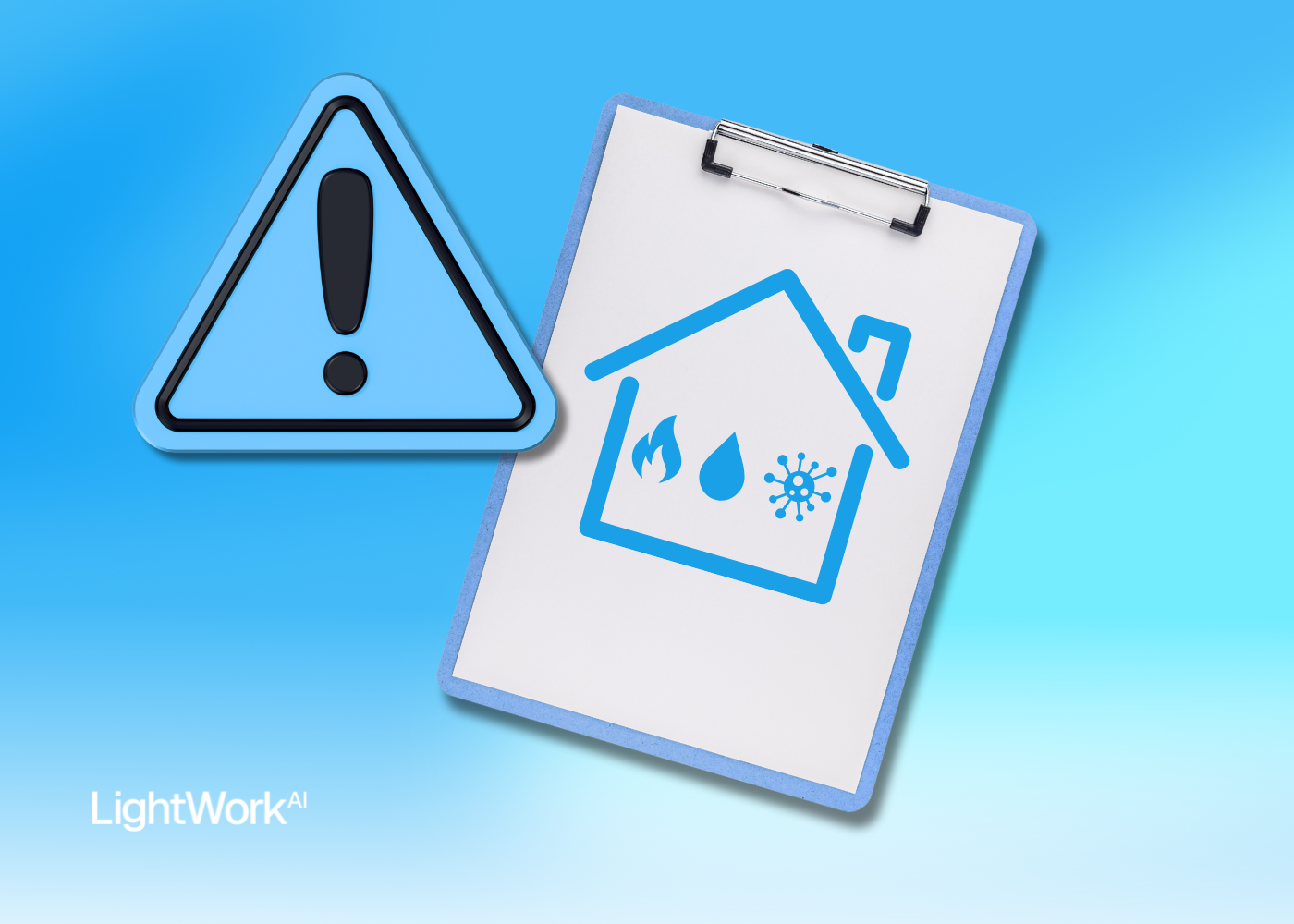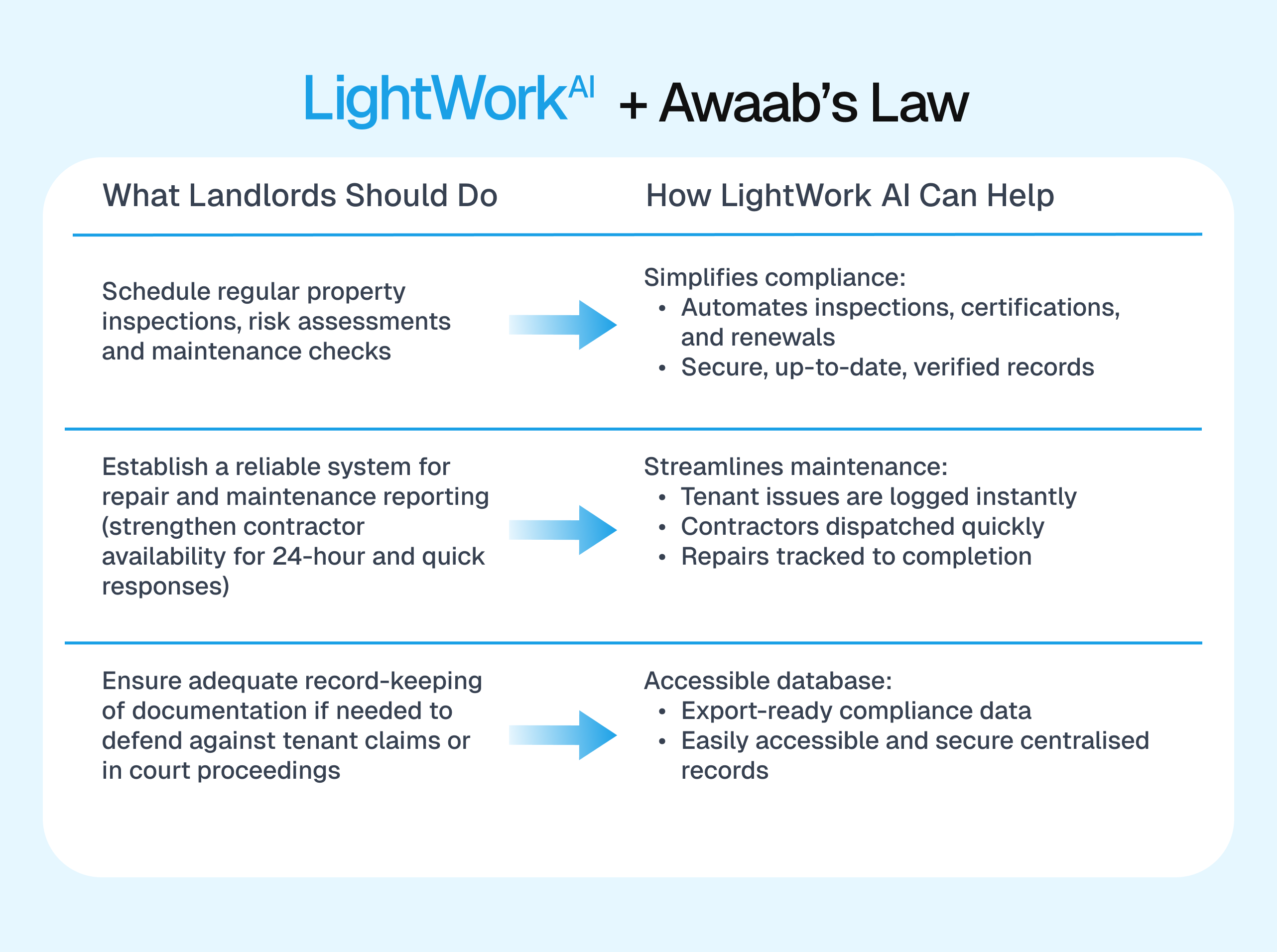The Rising Cost of Compliance: Why Awaab’s Law Matters for Private Landlords
Legislation is tightening across the PRS, and Awaab’s Law is raising the stakes demanding speed, evidence, and prevention. Here's how to stay ahead of rising risks, before the law hits.

Awaab’s Law takes effect in October 2025. The new legislation now requires landlords to carry out hazard repairs within strict, legally defined timeframes. Failure to comply can lead to civil penalties and court action.
The new legislation distinguishes between two categories of hazard, each with specific timeframes for action:
- Emergency hazards: such as gas leaks or unsafe electrics must be made safe within 24 hours.
- Significant hazards: such as damp and mould under the Housing Health and Safety Rating System (HHSRS) must be inspected within 10 working days, with remedial work begun within five if risks are confirmed.
- Tenants must be provided with a written summary of findings within three working days.
- If the work cannot be completed within the initial remediation period, the landlord must provide suitable alternative accommodation for the tenant.
The regulations are currently being applied to social landlords, however, private landlords should not ignore them. The introduction of the Renters’ Rights Bill is expected to extend similar responsibilities to the private rented sector (PRS).
Legal duties for private landlords
Private landlords already have clear legal duties:
- The Landlord and Tenant Act 1985 requires landlords to maintain the structure, exterior and key installations such as gas, electricity and heating.
- The Homes (Fitness for Human Habitation) Act 2018 makes landlords directly liable if homes are not fit for habitation at any time.
- The Housing Health and Safety Rating System covers 29 hazards, including damp, mould, gas and electrical safety.
With the Renters’ Rights Bill, inspections and enforcement will rise, especially for vulnerable tenants. Environmental Health Officers (EHOs) will take more frequent and robust action where hazards are found. The Bill goes further by placing a clear legal duty on landlords to address reported hazards. The aspect of flexibility is removed. Instead of acting within a 'reasonable time,' landlords must now meet specific deadlines, ultimately intensifying duties, driving up costs, and raising the risk of penalties.
In 2021, over half of the cases reported to the Housing Ombudsman Service were complaints about damp and mould, highlighting its significance as a housing issue in the UK. While both tenants and landlords share responsibility for maintaining reasonable living conditions, under the new law the legal duty now rests solely with landlords.
This means:
- Landlords must fix reported hazards, such as damp and mould, within strict timeframes.
- If repairs can’t be completed quickly, tenants must be rehoused until they are.
- Failure to act could result in legal action, fines, or prosecution.
Why compliance costs are rising
The number of duties have not changed much, but speed, scrutiny, and enforcement have. That’s why compliance costs in the PRS are climbing. Stricter deadlines mean more inspections and higher call-out fees.
But the real hidden cost comes from failing to keep paperwork in order. Every inspection, safety certificate, and tenant communication should be documented and stored. A solid paper trail isn’t just to prove compliance to regulators, but also to protect against costly litigation. Without it, even a minor dispute can spiral into a costly legal case. Landlords who invest in maintaining thorough records can avoid hefty legal bills and undue stress.
Not just compliance, but prevention
For private landlords with multiple properties, buy-to-lets, and in particular HMOs in older Victorian buildings, these new responsibilities could become a significant management challenge.
The cost of managing these buildings will rise, as well as their risk. Landlords are advised to take preventative measures.
The table below shows three steps landlords should take to get ready for Awaab's Law, and how LightWork AI can help make compliance easier:

Traditional systems vs LightWork AI
Traditional Systems: Spreadsheets, reminders and paper files cannot handle 24-hour deadlines across dozens of tenancies. Risks include missed certificate renewals, slow responses to complaints, poor communication records and no audit trail. For private landlords and agents, relying on manual systems is now a liability.
LightWork AI’s Solution:
- One dashboard tracks gas, electrical and building compliance across the portfolio.
- Automated workflows renew certificates, book inspections and escalate hazards.
- Agentic AI assistants reduce backlog by handling repetitive compliance tasks.
- The platform scales easily, whether you manage 10 properties or 500.
See more on the LightWork compliance page.
The next step: get ahead of Awaab's Law
Landlords must adapt to the new rules and can no longer turn a blind eye. Prompt and effective action on damp, mould, and other hazards is essential. Awaab’s Law raises the bar, imposing strict deadlines, documentation requirements, and tougher enforcement. Landlords now need faster inspections and callouts, reliable record-keeping, and scalable systems. Manual approaches simply can’t keep up.
The solution is to modernise compliance. LightWork AI enables private landlords to manage building, gas, and electrical compliance across entire portfolios with speed and confidence.
Get in Touch
Tenant expectations are rising, and so is legal risk. Book a demo today to see how LightWork AI can help you stay ahead.

